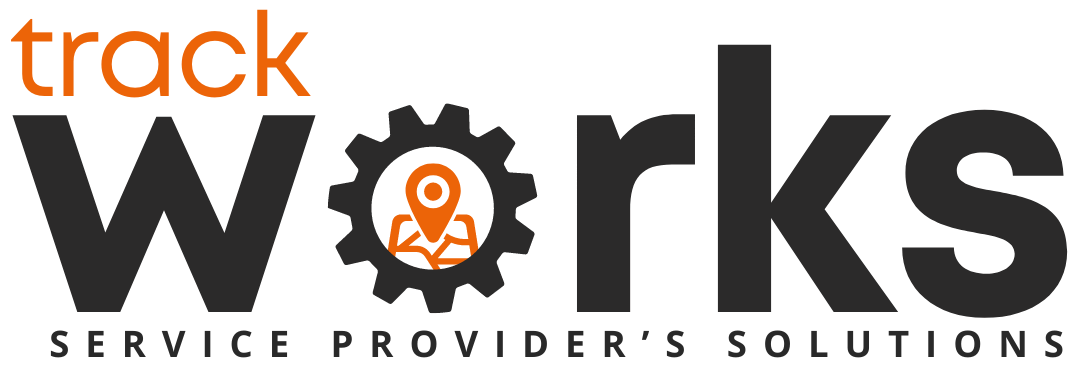Holiday Season Workflow: How Field Service Operations Teams Stay Productive in December
Field service operations don’t slow down when the holidays arrive. In fact, for many service providers—especially those in HVAC, electrical, plumbing, and facilities management—the end of the year can bring a perfect storm of challenges: fluctuating demand, reduced staff availability, unpredictable weather, and tight scheduling windows.
Yet, with the right strategy, technology, and preparation, December can also become one of the most productive and profitable months of the year. By focusing on proactive planning, real-time communication, and smart resource allocation, field service teams can maintain efficiency, deliver excellent customer service, and close the year strong.
This guide outlines how field service managers can use technology-driven workflows—like those powered by Track Works—to stay organized, efficient, and in control throughout the holiday season.
1. Plan Ahead for Coverage and Capacity
Why it matters:
The holiday season brings unique staffing challenges. Technicians take time off, customers delay non-urgent jobs, and emergencies spike without warning. Without proper planning, managers risk gaps in coverage and scheduling chaos that affect customer satisfaction.
How to implement:
- Forecast staffing and demand early. Review historical data from previous December periods to anticipate peak service days and likely downtime.
- Use scheduling software for transparency. With Track Works’ web and mobile dashboards, managers can visualize technician availability, PTO, and on-call rotations in advance.
- Balance workloads efficiently. Assign work orders based on technician skill sets, location, and priority using integrated scheduling and dispatch tools.
- Plan emergency backup coverage. Identify a few technicians who can be on-call for high-priority service requests, ensuring coverage even during peak holiday hours.
Practical tip:
Hold a short “holiday readiness” meeting in early December to confirm coverage, communicate policies, and reinforce response expectations. Visibility and early communication reduce surprises later.
2. Streamline Communication Across Teams
Why it matters:
When office staff and technicians operate on different schedules or in different regions, miscommunication can derail productivity. Missed updates, outdated job details, or scheduling changes can easily result in double bookings or unhappy customers.
How to implement:
- Leverage mobile connectivity. Equip all field technicians with the Track Works mobile app to receive real-time updates, job details, and location data.
- Enable instant status updates. As technicians close out jobs or update service notes, office staff and dispatchers receive live visibility through the Track Works web dashboard.
- Automate notifications. Use system alerts to remind customers of upcoming appointments or notify them of delays—reducing inbound support calls.
- Centralize communication logs. Keep messages, job notes, and updates within the platform so everyone—from dispatch to management—can access accurate records.
Practical tip:
Encourage technicians to update job statuses from the field before driving to the next appointment. This keeps the entire operation synchronized and minimizes end-of-day reconciliation time.
3. Maintain Inventory Visibility to Avoid Delays
Why it matters:
Unexpected parts shortages can cripple service efficiency during the busiest month of the year. Customers expect quick turnaround times, and waiting for a part order can lead to missed deadlines and revenue loss.
How to implement:
- Audit inventory before the rush. Review usage patterns and reorder common parts that spike in winter months—such as filters, valves, or heating components.
- Use integrated inventory management. Track Works’ inventory integration connects field usage to office systems, ensuring every part used is recorded automatically.
- Automate reorder alerts. Set minimum quantity thresholds for critical items so new orders trigger automatically.
- Track van stock levels. Assign inventory per technician or service vehicle to ensure techs have what they need before dispatching.
Practical tip:
Schedule a mid-December “inventory check” to restock high-turnover parts and confirm suppliers’ delivery timelines before offices close for the holidays.
4. Optimize Dispatching with Geo-Tracking
Why it matters:
Traffic, weather, and last-minute callouts can cause costly inefficiencies if dispatchers lack visibility into technician locations. Optimized routing and dispatch ensure that every mile driven contributes to productivity.
How to implement:
- Activate the Geo-Tracking module. Use Track Works’ real-time technician tracking to view field locations and assign the closest technician to urgent jobs.
- Plan routes efficiently. Reduce travel time and fuel costs by grouping service calls geographically.
- Use proximity-based alerts. When a nearby technician finishes early, dispatchers can assign new calls in seconds.
- Monitor field progress. View live status updates (an route, onsite, completed) to maintain control of active work orders.
Practical tip:
Incorporate geo-tracking into daily operations meetings—review yesterday’s routes, analyze travel efficiency, and adjust assignments based on real-time data.
5. Balance Holiday Morale and Productivity
Why it matters:
The holidays can be stressful for field teams managing tight schedules and demanding clients. Maintaining morale directly affects performance, retention, and customer satisfaction.
How to implement:
- Recognize high-performing technicians. Use Track Works’ reporting data to identify and reward those who consistently meet KPIs or cover difficult shifts.
- Offer flexible scheduling. Rotate on-call duties fairly and allow team members to trade shifts when possible.
- Communicate clearly. Transparency around expectations reduces stress. Post schedules early and use system alerts to prevent confusion.
- Encourage team wins. Share positive client feedback and metrics at weekly check-ins to reinforce teamwork and motivation.
Practical tip:
Create a small end-of-year recognition initiative—like “Technician of the Month” or gift cards for top performers—to show appreciation and keep spirits high.
6. Ensure Data Accuracy Before Year-End
Why it matters:
Accurate operational data supports billing, compliance, and year-end reporting. Missing time logs, open work orders, or unrecorded parts can delay invoicing and skew financial results.
How to implement:
- Review open work orders weekly. Use Track Works’ reporting tools to identify jobs still marked “in progress” or missing documentation.
- Validate technician time tracking. Cross-check hours logged in the mobile app with payroll data to prevent discrepancies.
- Confirm service documentation. Ensure photos, customer signatures, and notes are attached before closing out jobs.
- Audit invoices and purchase orders. Use Track Works’ invoicing module to verify all materials and labor have been billed correctly.
Practical tip:
Set aside one afternoon each week in December for data validation. Small weekly cleanups prevent a massive reconciliation headache in January.
7. Deliver a Consistent Customer Experience
Why it matters:
Customer experience can make or break relationships—especially when response times are shorter and expectations higher during the holidays. A reliable, transparent process builds loyalty and repeat business.
How to implement:
- Communicate proactively. Send reminders and arrival notifications to keep customers informed.
- Provide service summaries instantly. With Track Works, technicians can close jobs, capture digital signatures, and email completed service reports immediately.
- Use service history to personalize support. Review each customer’s past issues to anticipate recurring problems or upsell preventive maintenance.
- Track customer feedback. Use reporting features to measure satisfaction trends and address any issues quickly.
Practical tip:
Add a personal touch—send thank-you messages or year-end service discounts to loyal clients. A simple gesture can create long-term retention.
8. Review Key Metrics Before the New Year
Why it matters:
Performance data reveals whether your workflows, tools, and resource allocation truly supported your team’s goals. Reviewing KPIs now sets a data-backed foundation for next year’s planning.
How to implement:
- Evaluate critical metrics. Focus on first-time fix rate, travel time per job, job completion ratio, and customer satisfaction.
- Use dashboards for quick insights. Track Works’ analytics tools let managers visualize team performance in real time.
- Compare against last year. Identify where you’ve improved and where bottlenecks remain.
- Set preliminary targets for 2026. Use current data to forecast demand and resource needs.
Practical tip:
Turn KPI reviews into a team conversation. Ask technicians what helped them succeed and what processes slowed them down. Real feedback drives smarter planning.
Conclusion
The holiday season doesn’t have to disrupt productivity—it can showcase your team’s strength, adaptability, and commitment to service excellence. By planning coverage early, maintaining communication through mobile tools, leveraging geo-tracking, and using real-time data to stay agile, field service companies can finish the year stronger than they started.
With Track Works, every work order, technician update, and customer interaction stays connected. The result is fewer missed details, faster response times, and better outcomes for both teams and clients.
December is the perfect time not just to wrap up the year but to demonstrate operational mastery—laying the groundwork for an even more efficient and growth-driven 2026.




No responses yet